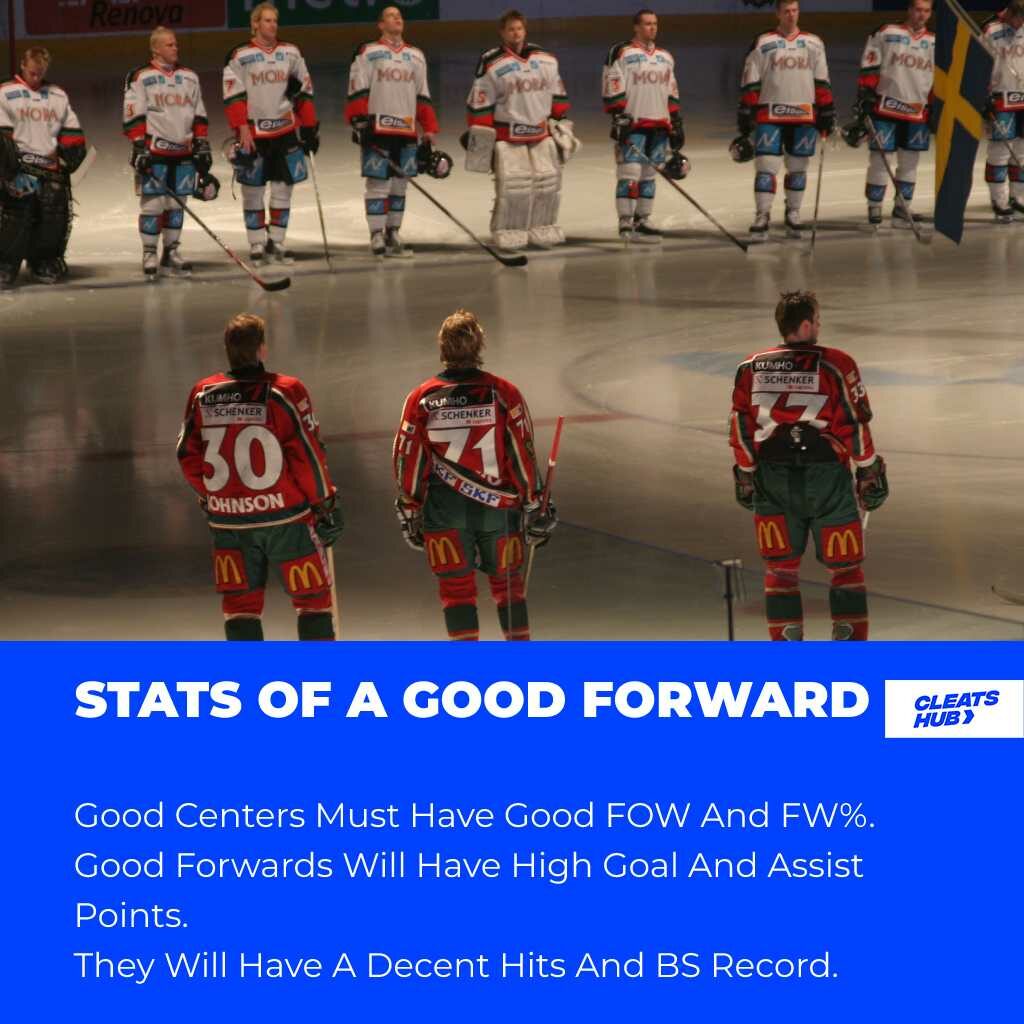Understanding Ice Hockey Stats: Players & Teams
Just like every other sport, ice hockey stats is a method of representing a team, player or goaltender’s performance using strings of abbreviations and numbers. Hockey fans often make use of this information to know how their team or players in their teams are performing at any time.
The abbreviation and mathematical analysis that gives an overview of the performance of a team, player or goaltender is what we refer to as Stats (implying statistics). In ice hockey there exist three types of stats. They are the:

- Player-Specific Stats (Defensemen and Forwards)
- Goaltender Stats
- Team Stats
Although they are composed of abbreviations, numbers and percentages, they tell a lot about a team or player. Hockey spectators who are familiar with stats can use them to predict the outcome of future matches.
Not to mention, stats can be based on a single game, a season, a comparison between players or teams, and even on a player’s career. As a beginner in ice hockey, understanding the abbreviations and numbers can be a problem. Therefore, we will be giving the meaning of each element that constitute ice hockey stats.
Understanding Player Stats
First, we will be looking at the meaning of the elements of the stats for players (defensemen and forwards). It will include not just the meaning but how it is gotten.
GP (Games Played)
It stands for the number of games a player has participated in.
G (Goals)
The total number of goals a player has in a game, season or career. A point represents a goal.
A (Assists)
A total of the assists that led to goals.
S (Shots)
It is the number of shots made to the net.
S% (Scoring Percentage)
It is the number of shots that became a goal. Moreover, it is obtained by deriving the percentage of goals scored from the number of shots made.
P or PTS (Points)
It is the total number of points obtained by a player during a game, season or career. It is the addition of goals and assists.
PN (Penalty)
It is the number of penalties assessed to a player. Check out the types of penalties in the NHL.
PIM (Penalty Infraction Minutes)
It is the cumulative time a player spends in the penalty box. It is calculated by adding the time for each assessed penalty.
TOI (Time On Ice)
The total time a player has spent on the ice during a game or current season.
ATOI (Average Time On Ice)
ATOI is the average of the total time spent on the ice by a player. It is obtained by dividing the full time spent on the ice by the number of games played.
PPG (Power Play Goals)
PPG is a measure of the number of goals a player scores when his team is on the power play. Powerplay is a situation in ice hockey when your opponent is short-handed, mostly due to a penalty.
PPA (Power Play Assist)
These are the number of effective assists a player records while his team is on the powerplay.
SHG (Shorthanded Goals)
These are the goals (by a player) scored when the opposing team is on powerplay. This means the goals a player scores against an opponent team when his team is shorthanded.
SHA (Shorthanded Assists)
Similarly, this means the number of assists that convert into goals when a team is shorthanded.
FOW (Faceoff Wins)
The number of face-offs a player has won in a game, season or career. Typically, the number will be high for centermen because they take most of the playoffs.
FW% (Faceoff Wins Percentage)
Percentage of faceoffs that were successful. It is the percentage of successful faceoffs to the total number of faceoffs.
FOL (Faceoff Lost)
In contrast to FOW, this means the number of faceoffs that were unsuccessful (lost).
+/- (Plus/Minus)
A plus/minus rating is two different ratings. A point (plus rating) is given every time an even strengthed or shorthanded team scores a goal while a player is on ice. While a point is removed (minus rating) when the opposing team scores an even-strengthed or shorthanded goal.
The number of minus ratings is taken from the plus rating to get a final score.
BS (Blocked Shots)
The number of shots that a player has blocked.
SOG (Shot On Goal)
It is the number of shots that the keeper had to save. It would have been a goal if these shots had not been saved.
GWG (Game Winning Goals)
The number of game-winning goals a player scores in a game or season. A goal is game-winning when a team will win the game without scoring any more goals. In simpler terms, the goal that makes the team one goal ahead of its opponent (A team’s third goal in a 5-2 game).
GTG (Game Tying Goals)
It is the number of game-tying goals a player scores. A goal is game-tying if it is the last goal that a game end in a tie.
ENG (Empty Net Goals)
The number of goals scored on an empty net.
HIT (Hits)
Intentional hits to an opponent player in possession of the puck, leading to the loss of the puck. A contact is not a hit if it leads to a penalty.
Ice Hockey Stats That Make A Good Defense
Defensemen do not usually score so much in a season, therefore judging how good a defence is based on scoring points is not logical. Even though it can show how well they do in offence, it does not give their defence strength.
Good defences often have good Hits and Blocked Shots stats ratings. This is because it shows how successful a player is in retrieving the puck from an opponent. Plus/Minus, Game Played and Time On Ice stats shows how much a team’s coach trusts a defenseman.
In addition, average stats on goals and assists can also show how well he can go on the offence when necessary.
Ice Hockey Stats That Make A Good Forward

The main skill set a forward (winger or centerman) needs is the ability to score or provide assists that can be capitalized on to give goals. Luckily, how well a forward can do this can be identified from his stat.
Apart from a player’s goal and assist, a player’s shot on goal (SOG) and scoring percentage reveals the accuracy of his shot. Also, for centermen, face-off wins (FOW) and face-off win percentage (FW%) tell the chances of a player winning face-offs.
Hits and blocked shots should also be considered as it reveals the defensive ability of a forward. Even though a forward’s primary goal is offence, he should also balance it up with good defensive skills.
Understanding Goaltenders
The stats of goaltenders is slightly similar to those of players. Elements like GP, G and A are the same for Goaltenders. However, unlike stakes the +/- rating (plus/minus) is not part of their stats.
GS (Game Started)
The number of games the goaltender started during the current season
MIN (Minutes)
Total time the goaltender spent on the ice in a season. It is in minutes.
W (Wins)
The number of games the goaltender’s team has won while he played in the match.
L (Losses)
The number of games the goaltender’s team lost while he played on the ice.
T (Ties)
These stats show the number of games a goalie has tied.
GA (Goal Against)
The number of goals scored against a goalie.
GAA (Goal Against Average)
Average goals allowed by a goaltender per 60 minutes of playing time. It is calculated by multiplying the number of goals against and dividing it by the total playing time.
SOG (Shot On Goal)
Total number of shots on goal a goaltender has faced in a season or career.
SV (Saves)
The number of shots on goals a goalie has saved during a season or career.
SV% or SVP (Save Percentage)
Percentage of total saved shots. It is the percentage of the total number of saves to the total number of shots on goal.
SO (Shutout)
This stat shows the number of games a goaltender had no goals against him. However, he must be the only goalie from his team to play in that game.
ENG (Empty Net Goals)
It is different from empty net goals of players. For goalies, it is the number of goals when the goalie leaves his net for an extra attacker.
Understanding Team Stats
A team stat shows the overall progress of ice hockey teams. It is also used by leagues to determine the standing and ranking of teams for each season. Below are some of the elements you will find on the stats of an ice hockey team.
Team Stats
W (Wins)
It is the number of wins a team has recorded.
L (Losses)
It is the number of games the team has lost in regulation.
T (Ties)
These are the games which concluded in a tie.
GP (Game Played)
It simply means the number of games a team has played.
GD (Goal Difference)
This is the difference between the number of goals by a team and the number of goals against the team. It is a method of a tiebreaker in standings.
STK (Streak)
It is the number of consecutive wins or losses a team records (winning or losing streak).
OTL (Overtime Losses)
These are simply the number of games a team looses in overtime.
OTW (Overtime Win)
In contrast to OTL, it is the number of games a team wins in overtime.
SOL (Shootout Losses)
It refers to the number of shootouts losses a team records.
SOW (Shootout Win)
Similarly, this refers to the number of shootout wins a team has.
P or PTS (Points)
It refers to the cumulative point a team has in a season or over some time. The metric for calculating points is:
- 2 points for Wins
- 2 points for Overtime Win (OTW)
- 2 points for shootout wins (SOW)
- 1 point for a tie
- 1 point for overtime loss (OTL)
- 1 point for a shootout loss (SOL)
- 0 points for losses
GF (Goals For)
It is the number of goals a team has recorded in a game, season or period.
GA (Goals Against)
It is the number of goals scored against a team.
Conclusion
Not every one of the stats shown above is used by teams in the NHL. Some of the stats such as the SOW and SOL are not used by the NHL and some other leagues. Regardless, knowing every one of them will help you understand NHL teams’/players’ performances better, and possibly predict games.
Psstt…. The Top Performing Cleats










